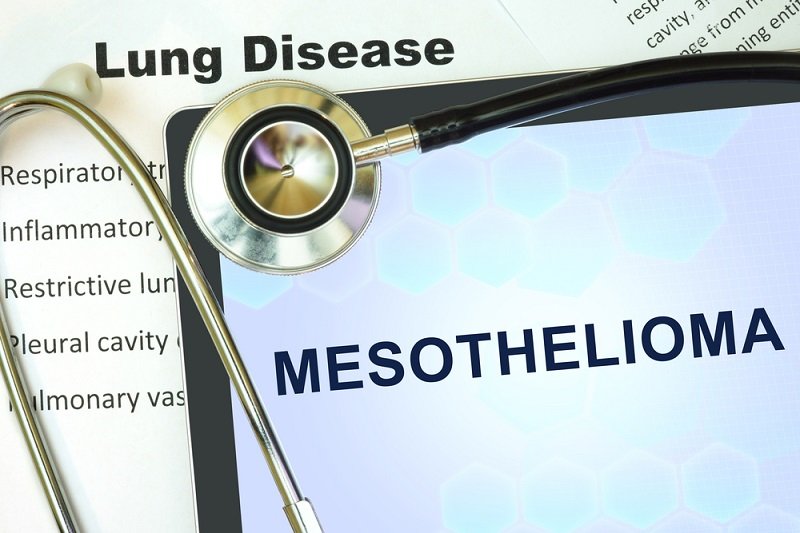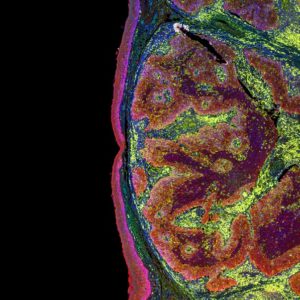Different Types of Mesothelioma Cancer

Mesothelioma is a rare form of cancer that is caused by the inhalation or ingestion of asbestos fibers. Mesothelioma develops in the mesothelium, a membrane forming the lining of several of the body’s vital organs.
Abnormal cells form in the mesothelium and divide without control when a person suffers from mesothelioma, and the disease can spread to other nearby organs or tissue. For this reason, mesothelioma can involve different organs, with the scope and severity of the disease depending on each individual case.
If you or a loved one has been diagnosed with mesothelioma, you should know that there is financial compensation available to help cover medical expenses and other losses related to the disease. Contact us now to learn about your legal rights and how we can help.
Four Types of Mesothelioma Identified by Location
The specific organ in which a mesothelioma tumor develops determines the type of mesothelioma a person has. There are four primary types of the cancer:
Pleural Mesothelioma (Lungs)
The pleura is one of two membranes surrounding each lung and lining the thorax. A significant number of malignant mesothelioma cases originate in the pleura, making pleural mesothelioma the most common type of the asbestos cancer.
Pleural mesothelioma can take anywhere from 15 to 60 years to develop, meaning a person could be diagnosed with mesothelioma long after their original asbestos exposure.
The symptoms of pleural mesothelioma are very similar to other less severe respiratory diseases, which often makes the disease difficult to diagnose. Common symptoms associated with pleural mesothelioma include:
- Pleural effusion (fluid build-up around the lungs)
- Chest pain
- Shortness of breath
- Fatigue
- Unexplained weight loss
Typically, the most effective way to make a pleural mesothelioma diagnosis is through a biopsy or pleuroscopy (a camera-assisted biopsy), either of which involves taking a tissue sample. Other testing methods could include diagnostic imaging such as X-rays, CT scans and MRIs, as well as a thoracentesis, which involves draining fluid from around the lung.
Peritoneal Mesothelioma (Abdomen)
 The peritoneum is the tissue lining the abdomen, which is why peritoneal mesothelioma is often referred to as abdominal mesothelioma. Research published in the Medscape General Medicine journal showed that peritoneal mesothelioma accounts for between 20 percent and 33 percent of mesothelioma cases, making it the second-most common type of mesothelioma.
The peritoneum is the tissue lining the abdomen, which is why peritoneal mesothelioma is often referred to as abdominal mesothelioma. Research published in the Medscape General Medicine journal showed that peritoneal mesothelioma accounts for between 20 percent and 33 percent of mesothelioma cases, making it the second-most common type of mesothelioma.
Military veterans, industrial workers, construction workers, shipbuilders and mechanics make up most of the peritoneal mesothelioma cases, although any person who was exposed to asbestos is vulnerable. It can take 15 to 60 years for peritoneal mesothelioma to develop.
Symptoms of peritoneal mesothelioma are often confused for other abdominal ailments, so it may be months before a person receives a proper diagnosis. Some symptoms associated with peritoneal mesothelioma include:
- Ascites (a build-up of fluid in the abdominal area)
- Abdominal pain or swelling
- Weight loss
- Fever
A peritoneal mesothelioma diagnosis may involve a biopsy by doing one of the following procedures:
- Peritoneoscopy: The abdominal wall is cut and an instrument with a light and camera is inserted into the abdomen in order to get a tissue sample.
- Laparotomy: The wall of the abdomen is cut to look for signs of cancer and to obtain a tissue sample.
Fine needle instrumentation or diagnostic imaging tests such as X-rays, CT scans and MRIs could also be used.
Pericardial Mesothelioma (Heart)
The pericardium is the tissue lining the heart. Research published in the International Journal of Cancer Research and Treatment showed that pericardial mesothelioma only accounts for 1 percent of mesothelioma cases, making it a very rare form of the disease.
Pericardial mesothelioma develops as the result of asbestos particles becoming lodged in the pericardium. It can take up to 60 years before pericardial mesothelioma develops.
Several symptoms associated with pericardial mesothelioma are mistaken for symptoms of other chest or heart problems. Some of the more common symptoms of pericardial mesothelioma include:
- Fluid in the pericardial space
- Difficulty breathing
- Chest pains
- Weight loss
- Fever and night sweats
- Heart palpitations
 Diagnosing pericardial mesothelioma could involve an echocardiogram, which is a test to determine whether there is fluid around the heart. It could also involve diagnostic imaging tests such as X-rays, CT scans, MRIs, pericardiocentesis (a procedure involving a needle removing fluid from the sac around the heart), or a pericardioscopy (a procedure in which a doctor uses a tube with a camera on it to examine the tissues surrounding the heart).
Diagnosing pericardial mesothelioma could involve an echocardiogram, which is a test to determine whether there is fluid around the heart. It could also involve diagnostic imaging tests such as X-rays, CT scans, MRIs, pericardiocentesis (a procedure involving a needle removing fluid from the sac around the heart), or a pericardioscopy (a procedure in which a doctor uses a tube with a camera on it to examine the tissues surrounding the heart).
Testicular Mesothelioma
The tunica vaginalis is the pouch of the membrane covering the testes. Testicular mesothelioma is the rarest form of mesothelioma.
The only known cause of testicular mesothelioma is exposure to asbestos. The asbestos fibers may remain in a person’s body for several decades, and it can be as many as 60 years before a person develops testicular mesothelioma.
Common testicular mesothelioma symptoms are not clearly defined. Possible symptoms include:
- Testicular swelling
- Accumulation of fluid in the scrotum
- A mass in the testicle
A testicular mesothelioma diagnosis typically occurs during or after surgery. Preoperative scrotal ultrasounds are being explored for diagnosing testicular mesothelioma.
Mesothelioma Cell Types
While types of mesothelioma are often defined by the tumor location, there are also three different types of tumor cells:
Epithelioid
Epithelial tissue covers the entire human body and all its internal and external organs. The American Cancer Society reported that epithelioid-related mesothelioma is the most common cell type of the cancer.
In 1994, a study published in the European Respiratory Journal found that Stage 1 epithelioid mesothelioma patients lived for 359 days after diagnosis, while Stage 3 and Stage 4 patients lived for an average of 112 days. The current five-year survival rate for epithelioid mesothelioma is nearly 10 percent, and a patient will have more treatment options the sooner a diagnosis is made.
Sarcomatoid
 Unlike the membranous tissue affected by epithelioid diagnoses, sarcomatoid cells affect supportive tissue such as bones, muscles and cartilage. Sarcomatoid mesothelioma is the most aggressive and deadliest of the three cell types, but it is also the least common, comprising only 7 percent to 20 percent of all new diagnoses in the United States.
Unlike the membranous tissue affected by epithelioid diagnoses, sarcomatoid cells affect supportive tissue such as bones, muscles and cartilage. Sarcomatoid mesothelioma is the most aggressive and deadliest of the three cell types, but it is also the least common, comprising only 7 percent to 20 percent of all new diagnoses in the United States.
A 2010 study published in the journal Modern Pathology found that 98 percent of sarcomatoid mesothelioma cases involved pleural tumors. Because sarcomatoid mesothelioma is extremely resistant to most treatment options, the median survival rate is usually less than six months.
Biphasic
A biphasic mesothelioma case involves physical characteristics of both epithelioid and sarcomatoid mesothelioma. Between 20 percent and 35 percent of all mesothelioma cases are classified as biphasic, which means it is the second-most common form of the disease.
Biphasic mesothelioma is often not detected until Stage 3 or later, which tends to limit the treatment options. Patients may have more options if they have more epithelial cells, but the prognosis for most Stage 3 or Stage 4 biphasic mesothelioma cases is between six and eight months.
Mesothelioma Tumors: Malignant vs. Benign
Mesothelial tumors can occur in any of the tissue linings mentioned above, but the tumors may be cancerous (malignant) or noncancerous (benign).
Malignant Mesothelioma
Any cancerous tumor of the mesothelium is considered malignant mesothelioma. Treatment for malignant mesothelioma will depend largely on the stage at which the cancer is diagnosed.
Treatments for malignant mesothelioma can include surgery, chemotherapy or radiation therapy. Removal of a malignant tumor does not equate to a cure, as tumors can return and may never be completely eradicated.
Benign Mesothelioma
Benign tumors can develop in the mesothelium, but these types of tumors are not typically the result of asbestos exposure. Benign tumors can be removed with a positive prognosis, but they should also be carefully monitored for changes indicating cancer development when not removed.
Even when a benign tumor is removed, there remains a risk of the tumor returning as cancer. Benign mesothelioma cases are extremely rare.
Treatment for Different Types of Mesothelioma
A person who has been diagnosed with malignant mesothelioma is dealing with an aggressive and incurable form of cancer. Several treatment options do exist that can help reduce pain and suffering and extend a patient’s life expectancy.
Depending on the type of mesothelioma diagnosis, different kinds of surgeries could be used. Some of these procedures are major surgeries. Common types of surgery for mesothelioma victims include:
- Extrapleural Pneumonectomy: The patient’s lung, affected tissue and surrounding lymph nodes are removed.
- Pleurectomy Decortication: The patient’s pleural tissue lining the lung and chest cavity as well as the tissue lining the diaphragm and the mediastinum are removed.
- Cytoreduction or debulking surgery: Any signs of cancer in the peritoneal or abdominal cavity are removed while the patient receives heated interoperative chemotherapy.
Chemotherapy Drugs
With chemotherapy, different drugs or other chemicals may be used to kill cancer cells. Pemetrexed and a combination of gemcitabine and cisplatin are the most common chemotherapy drugs for mesothelioma, although some doctors may recommend multiple combinations of other drugs.
Chemotherapy often involves harsh side effects. The most common side effects include:
- Fatigue
- Chest pain
- Nausea and vomiting
- Flu-like symptoms
- Shortness of breath
- Constipation
- Fever
- A low white or red blood cell count
Radiation Therapy
 Cancer cells may be destroyed or shrunken through ionizing radiation used in radiation therapy. The radiation may be either part of a multimodal treatment protocol or part of a palliative treatment to reduce pain.
Cancer cells may be destroyed or shrunken through ionizing radiation used in radiation therapy. The radiation may be either part of a multimodal treatment protocol or part of a palliative treatment to reduce pain.
Advances in radiation therapy coupled with a better understanding mesothelioma have also led to increased survival times. Though more research is needed, current treatments have provided hope for mesothelioma patients.
Palliative Treatment
Palliative procedures focus more on easing symptoms than trying to find cures. Doctors may use one of the following palliative procedures:
- Pleurodesis — sealing of the pleural space so fluid cannot build up around the lungs
- Pleurocentesis or thoracentesis — removing fluid build-up in the chest cavity
- Paracentesis — removing ascetic fluid from the abdominal cavity
- Pericardiocentesis — removing fluid build-up from the pericardial sac around the heart
Financial Help for Mesothelioma Patients and Families
 Being diagnosed with mesothelioma often means facing a daunting level of necessary medical treatment. This type of care is often extremely expensive and can be a financial burden on patients and caregivers.
Being diagnosed with mesothelioma often means facing a daunting level of necessary medical treatment. This type of care is often extremely expensive and can be a financial burden on patients and caregivers.
However, there is financial relief available for mesothelioma patients and their families. Asbestos companies knew of the dangerous health effects of their products, yet they failed to warn workers and consumers. Victims of mesothelioma can pursue claims against these companies to recover payment for:
- Current, past and future medical expenses
- Travel expenses related to mesothelioma treatment
- Lost income and diminished earning capacity for the future
- Pain and suffering damages
Even if a company responsible for your asbestos exposure has filed for bankruptcy, you may be able to obtain compensation from an asbestos bankruptcy trust fund that has been set up to pay victims. In addition, you may be eligible for Social Security disability benefits, veterans’ benefits or workers’ compensation benefits.
An experienced mesothelioma lawyer can discuss your diagnosis and your work history or military service history to identify all the parties that should be held responsible for your illness. A knowledgeable lawyer can collect evidence of how, where and when you were exposed to asbestos, including witness statements from former co-workers, blueprints of workspaces and invoices for asbestos materials used. Your legal team will take care of all the legwork related to building a strong claim for compensation, allowing you and your family to focus on your health.
If you are ready to speak with a top-rated mesothelioma attorney, contact us today. A consultation is free, and you are under no obligation. In addition, you should know that a respected mesothelioma law firm will not charge any money upfront to begin working on your case, and you and your family will not pay anything for legal help unless your lawyer recovers money for you.
There is no risk for seeking legal help for mesothelioma, but the reward can be significant: future financial stability for you and your family.

